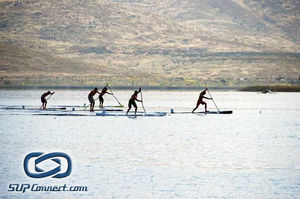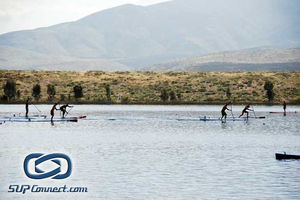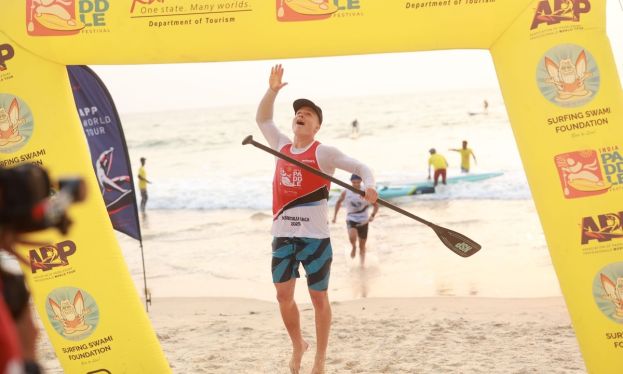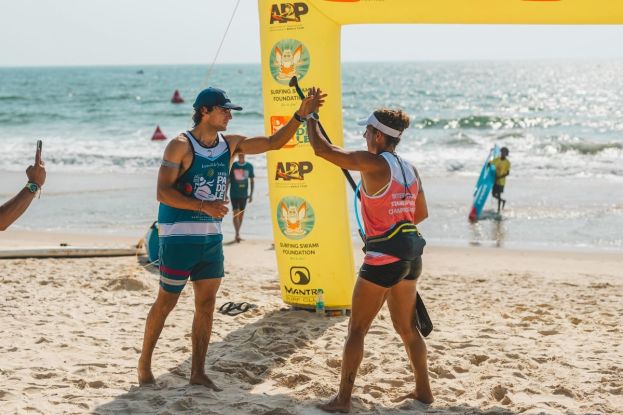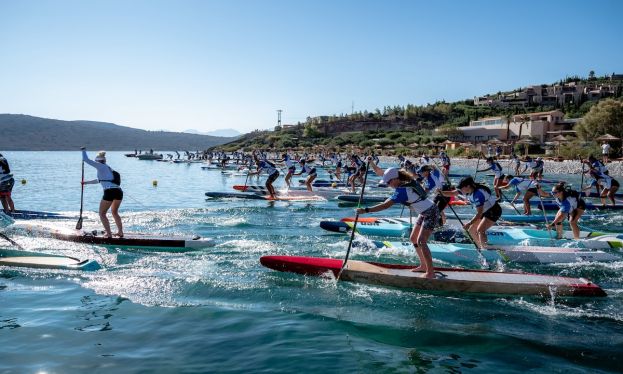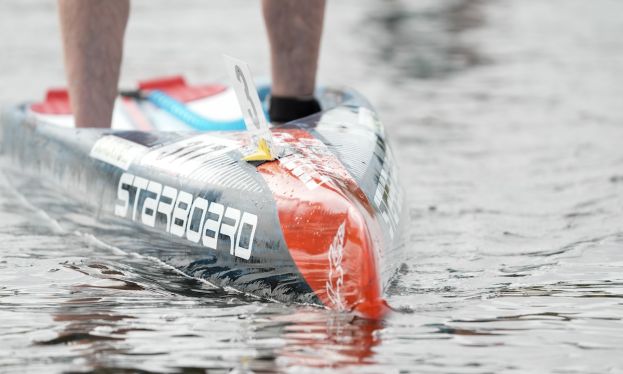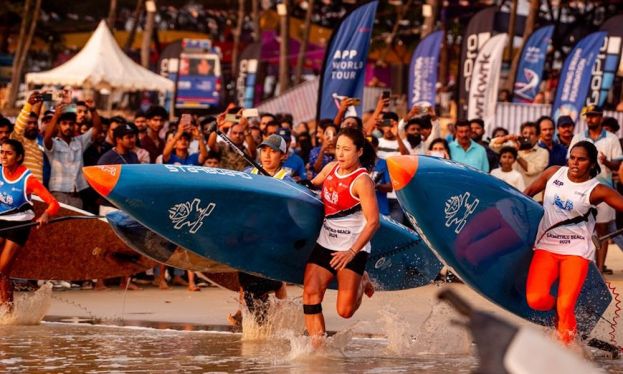The Plunge Stroke Shocks Sup World
- Written by Staff
- Published in Tips
- Comments::DISQUS_COMMENTS
Written by Andre Niemeyer
The stand up paddle board sprint race at the Olympic Training Center became the center of much controversy when Jim Terrell and Dan Gavere came in the lead with an eccentric stroke technique.Join the Sup Race Group for Updates.
|
The Plunge Stroke
The Plunge Defined The winning sup stroke is similar to the Olympic style canoe technique, as Terrell noted, but also much like a surfing stance, as Gavere put it. The technique also has striking similarities with the “plunge position” in fencing, for the paddler not only has one foot out in front of the other like in Olympic canoeing and surfing, but also takes a certain plunge forward to boost his paddle reach.
Speed Differential
Race Format & Results 200 meter sprint w/ lanes 1. Jim Terrell 1 01:02.854 18 See full results on Sup Race Group
Lane Start |
SAN DIEGO, California – With the fast growth of the sport, stand up paddle boarding is raising lots of questions, especially internally when it comes to sup racing. Most recently, there were lots of controversies surrounding the stroke technique employed by Jim Terrell and Dan Gavere during the Silver Regatta Race at the Olympic Training Center on April 23, 2011.
1. Race Format & Results
Arguably, and that seemed to be the consensus, their eccentric stroke technique earned them the lead positions (Terrell 1st and Gavere 2nd) ahead of other paddlers who are typically faster, like Slater Trout from Maui and Matt Becker and Anthony Vela from California. (Note that Vela, who is arguably faster than Chuck Glynn, lost to Glynn, who was also employing the eccentric stroke.) The format of the stand up paddle race in question was a 200 meter (0.12 miles or 218 yards) sprint, with separate lanes for each paddler, a far cry from the typical 5 and 10 mile courses, where all competitors battle it out in an open field. Post or view race results on Sup Race Group.
2. The Plunge Stroke
The winning sup stroke is similar to the Olympic style canoe technique, as Terrell noted, but also much like a surfing stance, as Gavere put it. The technique also has striking similarities with the “plunge position” in fencing, for the paddler not only has one foot out in front of the other like in Olympic canoeing and surfing, but also takes a certain plunge forward to boost his paddle reach.
“By putting one foot out in front of the other it just opens my hip up as a loaded spring when I take the stroke,” said Terrell. That stance forces you to paddle on one side, thereby keeping your paddle blade longer in the water since you don’t have to switch the paddle from one side to the other. “Every time you switch sides you're losing a second or two,” said Gavere. “As soon as you take the paddle out of the water you're slowing down. When you switch sides that paddle is out of the water for a much longer period of time.” Signup for Supconnect Newsletter.
3. Is the Plunge Faster?
But is the plunge stroke actually faster? The results of the stand up paddle sprint race at the Olympic Training Center appear to indicate so, at least in 200m sprint races. For sup racers (Terrell and Gavere) were paddling the same boards as usual, against the same competition, with no drastic change in conditioning, and yet came ahead of paddlers who are typically faster.
Now the answer is inconclusive when you ask the competitors. “I don't know if it's been proven to be faster yet or not,” said Terrell. “I haven't done enough testing the other way and done time trials enough to know. I kind of in my head think it'll be faster and that's why I wanted to try it today. But I haven't played around with it enough to know.” By contrast, Slater Trout believes there is no difference in speed. “I don't think it's faster. I think it's maybe more efficient, because I was right there with him and I was in the normal stance. So I think they are both just different and very similar in speed.” But Gavere disagrees. “The fastest technique utilized in my opinion is gotta be the surf stance, where you're paddling on one side the whole time. Because every time you switch sides you're losing a second or two. As soon as you take the paddle out of the water you're slowing down. When you switch sides that paddle is out of the water for a much longer period of time.” Join the Sup How-to & Technique Group.
If we were to look at the Silver Regatta alone, the answer seems to be clear: the plunge is faster in 200m sprint sup races. Now, using one data point to arrive at a conclusion is never good science, although it does offer grounds for an educated guess (or hypothesis, as scientists would call it), a guess which is certainly worth to be put to further testing. And testing will likely not be all. Several questions have begun to lurk over the plunge stroke. Some of them include matters of regulation, the impact it will have on the user-friendly quality of the sport, and much more. In any case, the relative novel stroke has no doubt taken a plunge into the stand up paddle world and will likely be the subject of much more discussion to come.
What's your take on the plunge stroke? Faster, good for the sport, got a problem with it?
.

Staff
Submit your news, events, and all SUP info, so we can keep promoting and driving the great lifestyle of stand up paddling, building its community, and introducing people to healthier living.
Website: supconnect.com Email This email address is being protected from spambots. You need JavaScript enabled to view it.
